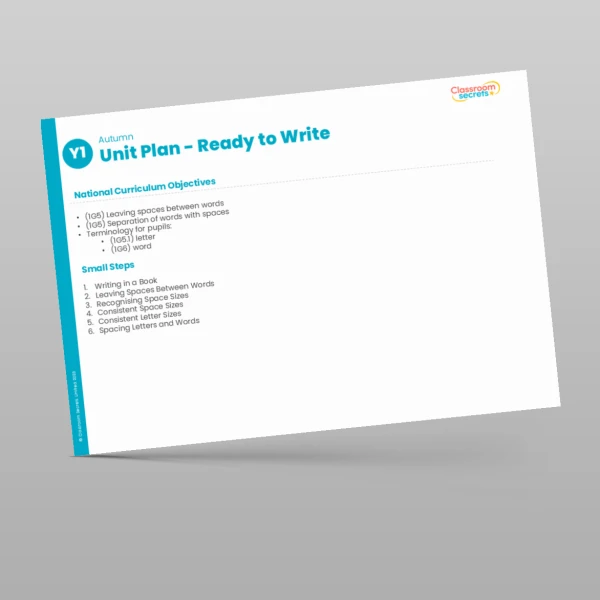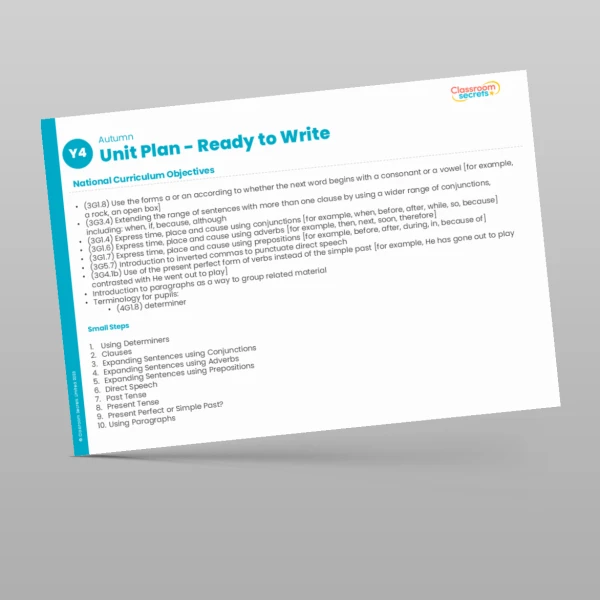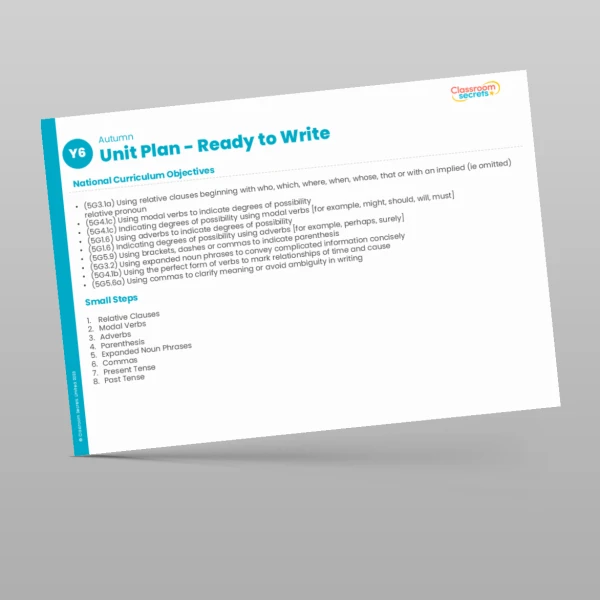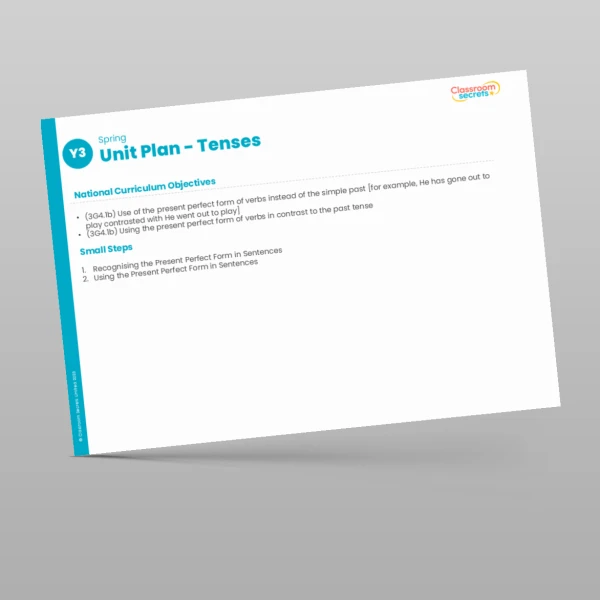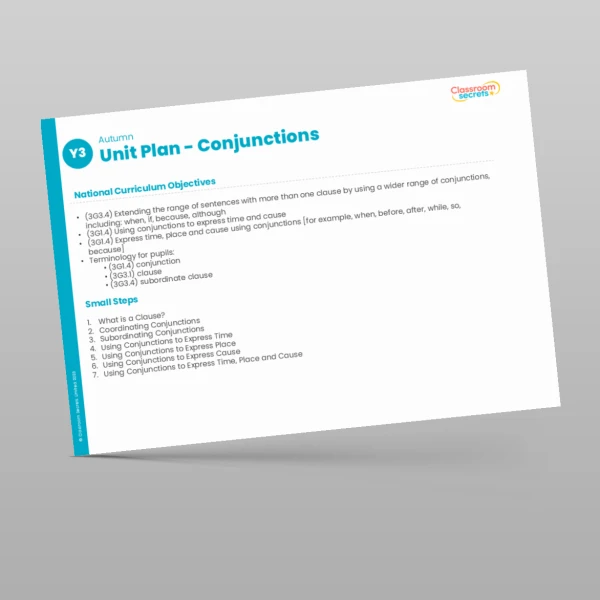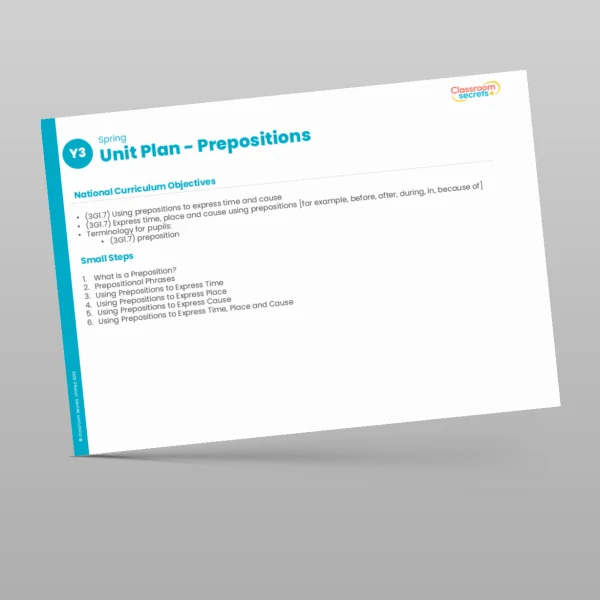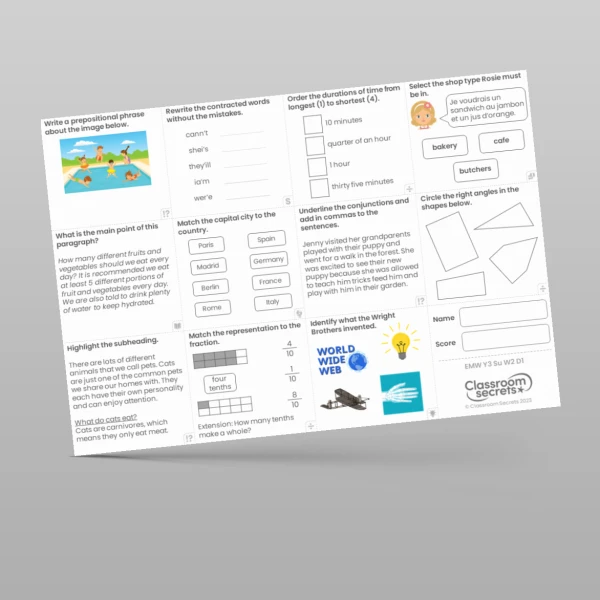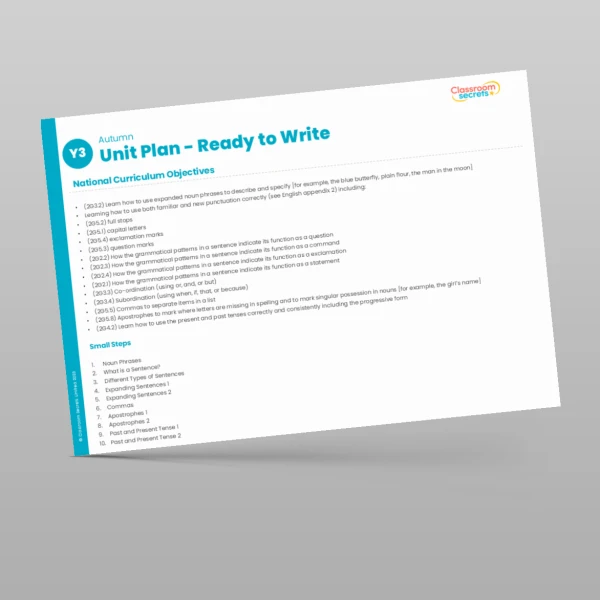

Looking for some guidance on where to begin with GPS in Year 3? Then look no further than this Year 3 Ready to Write Unit Plan.
With a proposed timetable of how this objective might fit in with your yearly plan, this resource also provides teaching staff with a series of small steps covering the objectives in the Ready to Write block in depth and how they might be approached with children to help them consolidate and secure their knowledge and understanding.
Each small step comes with notes and guidance for support as well as a set of focused questions to help get you started with your class. Resources are available to support this lesson, including teaching resources, worksheets and much more!
Curriculum Objectives
- Learning how to use both familiar and new punctuation correctly including: full stops / Use of full stops to demarcate sentences
- Learning how to use both familiar and new punctuation correctly including: capital letters / Use of capital letters to demarcate sentences
- Learning how to use both familiar and new punctuation correctly including: exclamation marks / Use of exclamation marks to demarcate sentences
- Learning how to use both familiar and new punctuation correctly including: question marks / Use of question marks to demarcate sentences
- Learning how to use both familiar and new punctuation correctly including: commas for lists / Commas to separate items in a list / Terminology for pupils: comma
- Learning how to use both familiar and new punctuation correctly including: apostrophes for contracted forms and apostrophes for the possessive (singular) / Apostrophes to mark where letters are missing in spelling and to mark singular possession in nouns [for example, the girl’s name] / Terminology for pupils: apostrophe
- Understand and use sentences with different forms: statement / How the grammatical patterns in a sentence indicate its function as a statement / Terminology for pupils: statement
- Understand and use sentences with different forms: question / How the grammatical patterns in a sentence indicate its function as a question / Terminology for pupils: question
- Understand and use sentences with different forms: exclamation / How the grammatical patterns in a sentence indicate its function as a exclamation / Terminology for pupils: exclamation
- Understand and use sentences with different forms: command / How the grammatical patterns in a sentence indicate its function as a command / Terminology for pupils: command
- Learn how to use: Expanded noun phrases to describe and specify [for example, the blue butterfly] / Expanded noun phrases for description and specification [for example, the blue butterfly, plain flour, the man in the moon] / Terminology for pupils: noun phrase
- Learn how to use: The present and past tenses correctly and consistently including the progressive form / Correct choice and consistent use of present tense and past tense throughout writing / Terminology for pupils: tense (past, present)
- Learn how to use: Co-ordination (using or, and, or but) / Co-ordination (using or, and, but)
- Learn how to use: Subordination (using when, if, that, or because) / Subordination (using when, if, that, because) / Develop their understanding of the concepts set out in English appendix 2 by: Extending the range of sentences with more than one clause by using a wider range of conjunctions, including: when, if, because, although
Tags
Autumn
2G5.2
2G5.1
2G5.4
2G5.3
2G5.5
2G5.8
2G2.1
2G2.2
2G2.4
2G2.3
2G3.2
2G4.2
2G3.3
2G3.4
Ready to Write
Guidance
Year 3 Guidance
